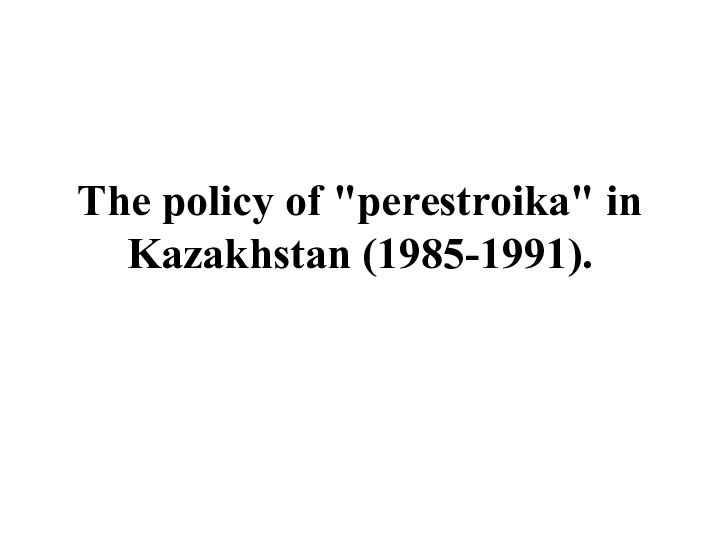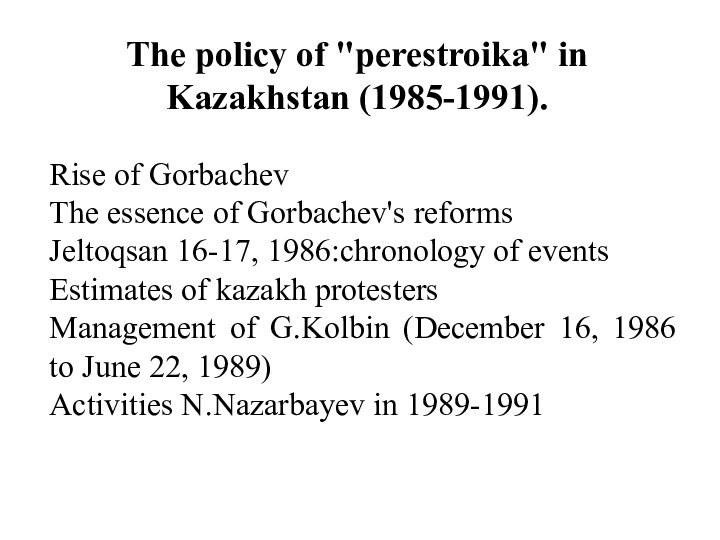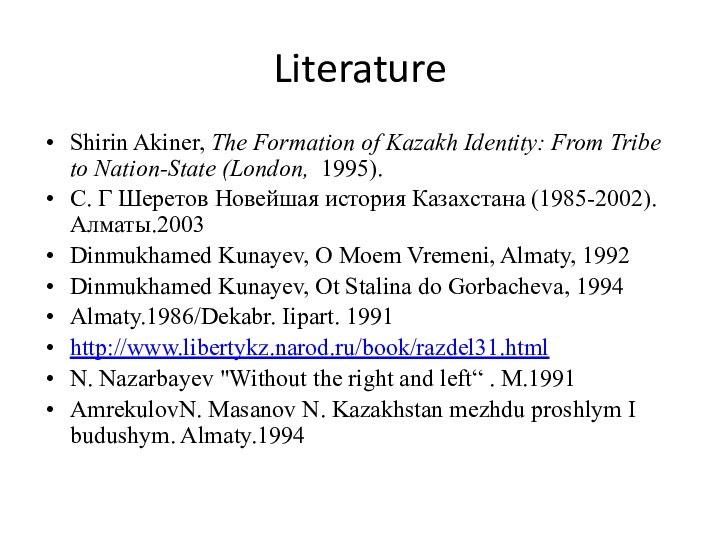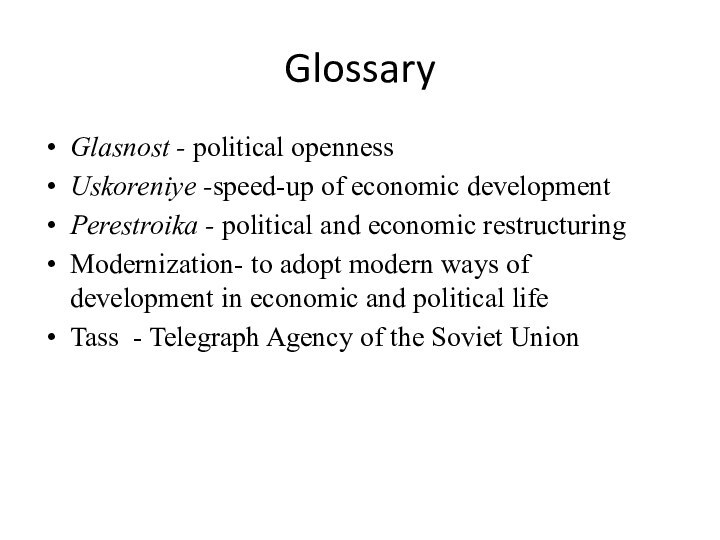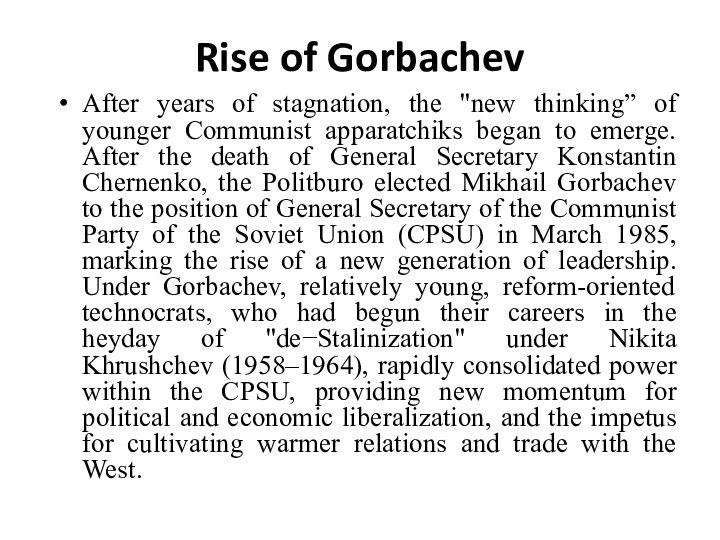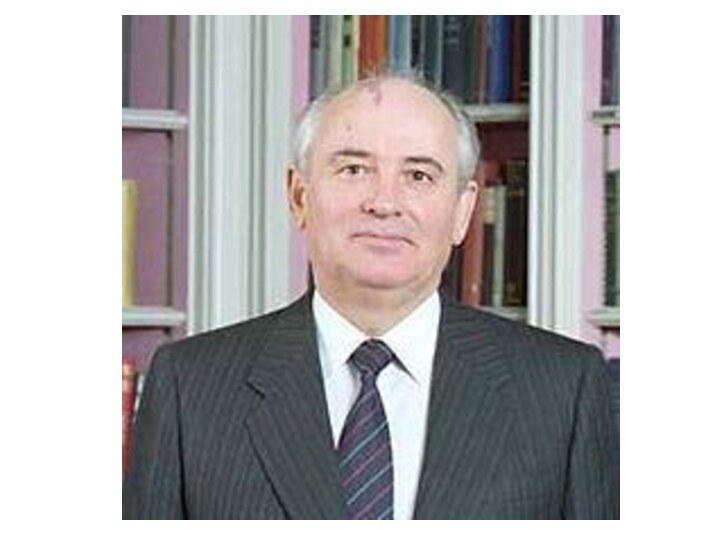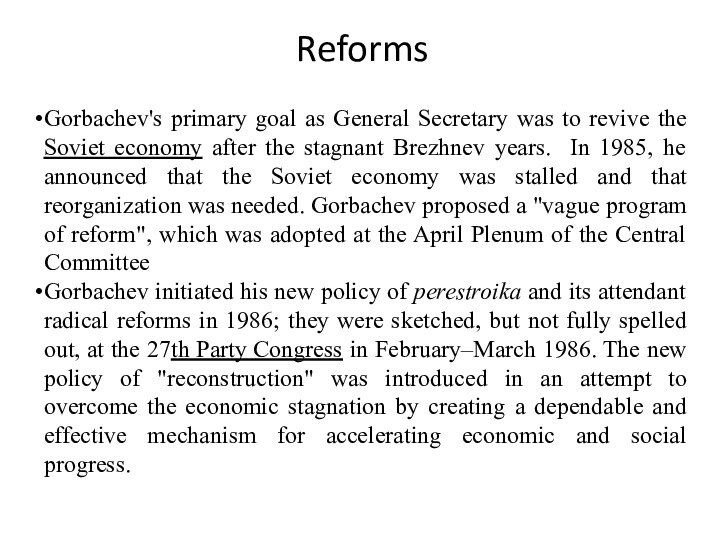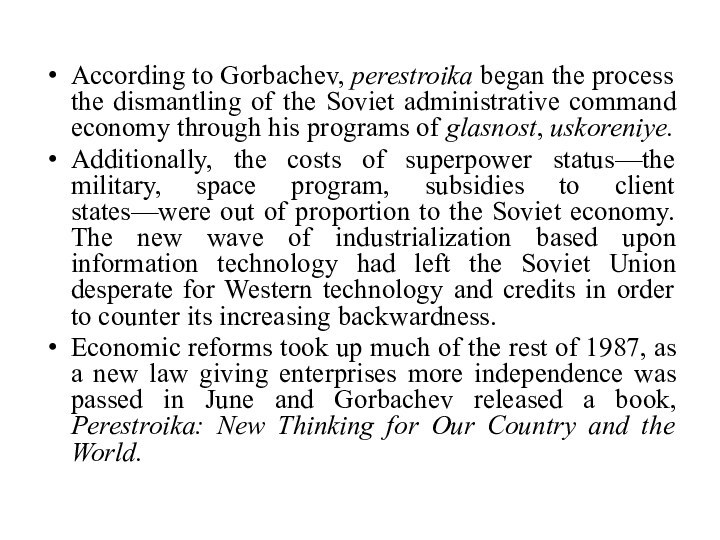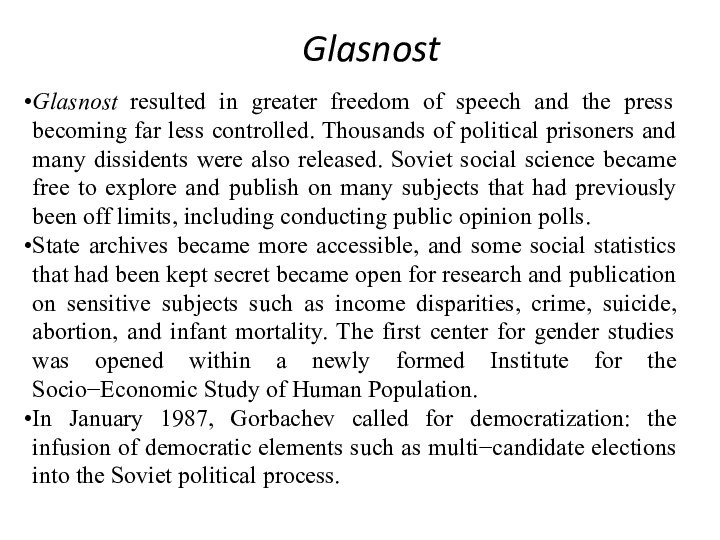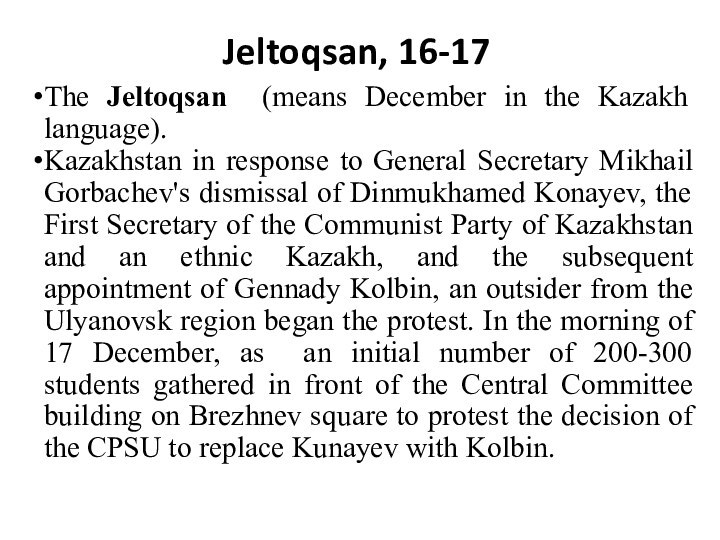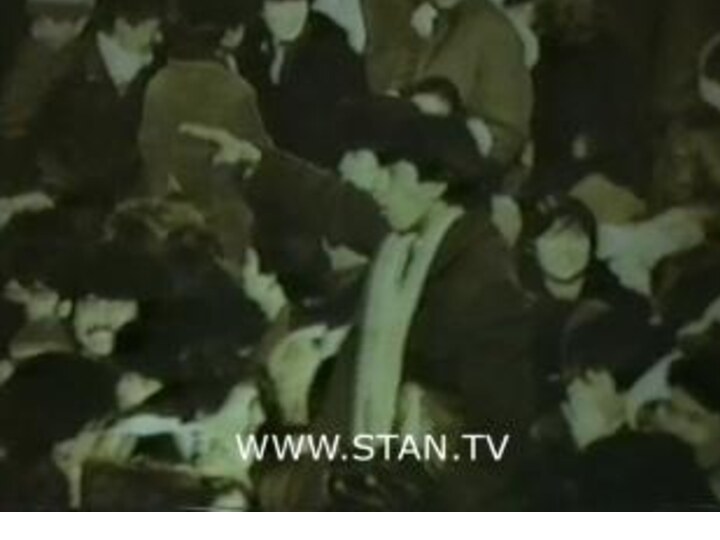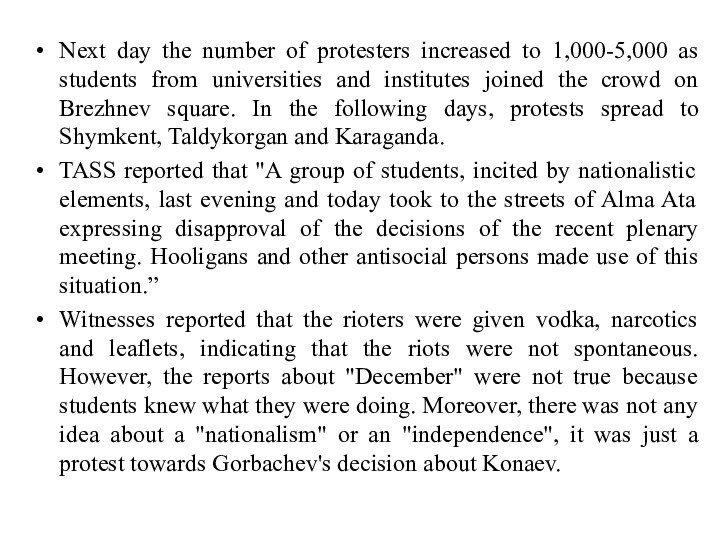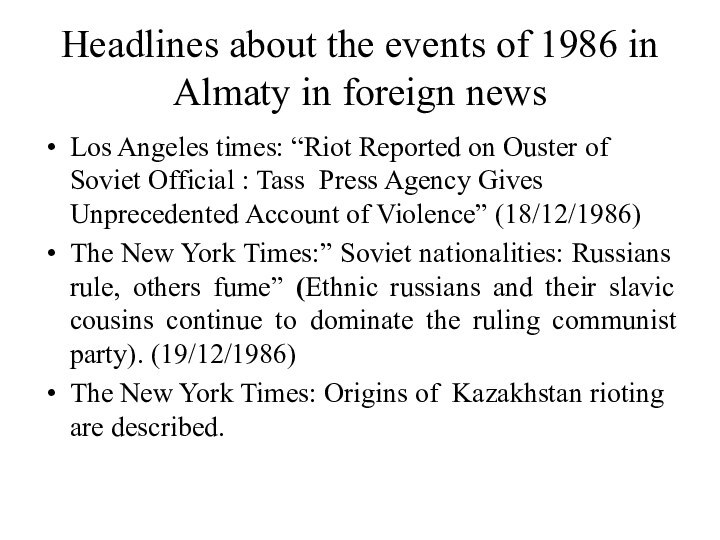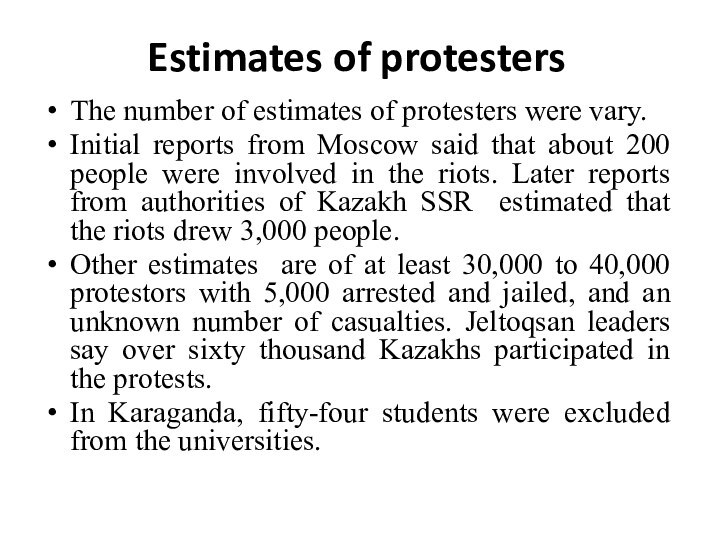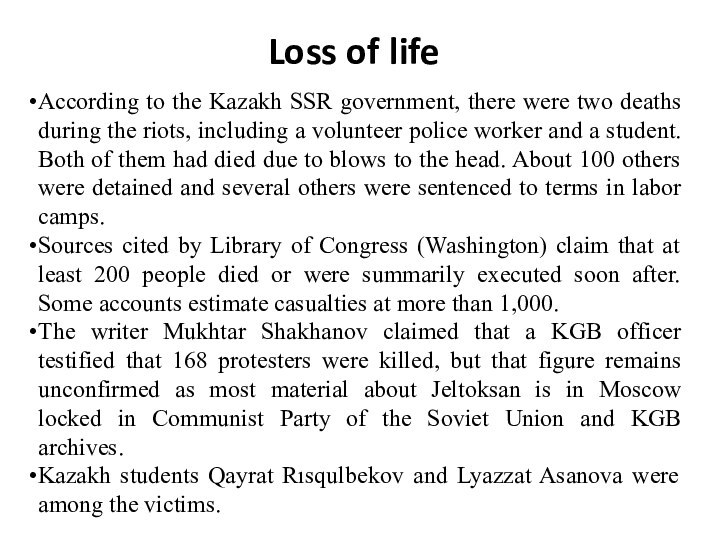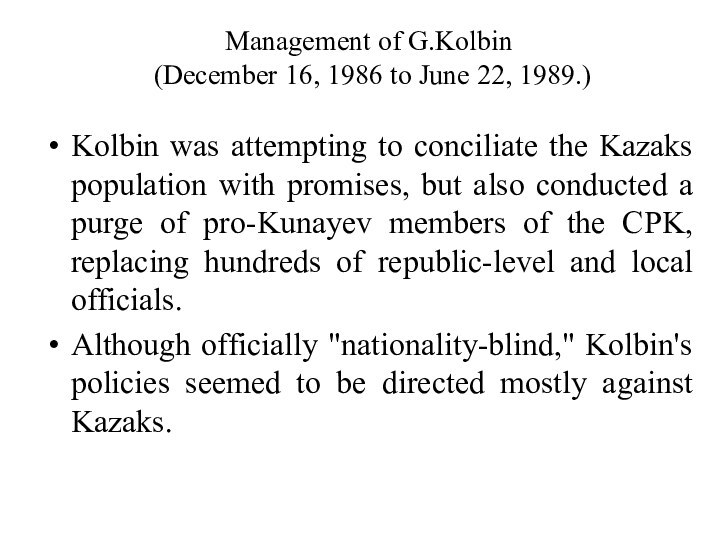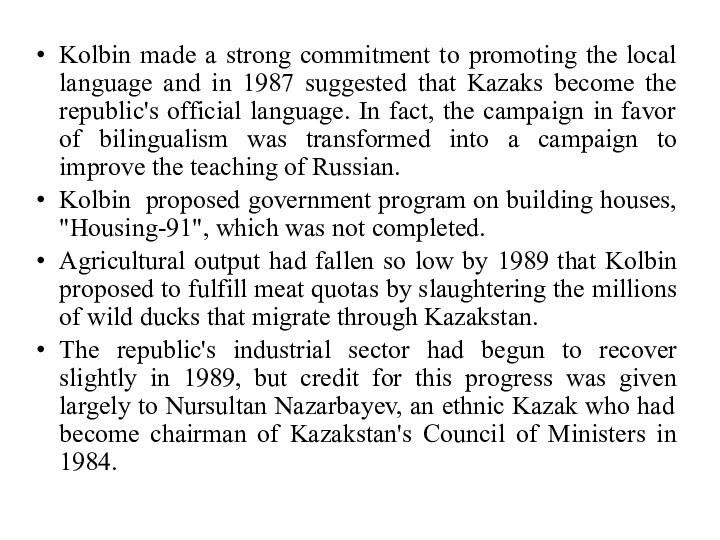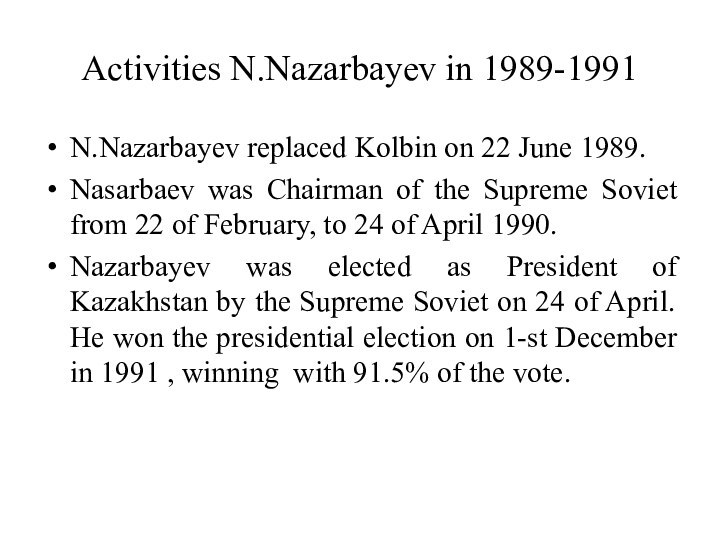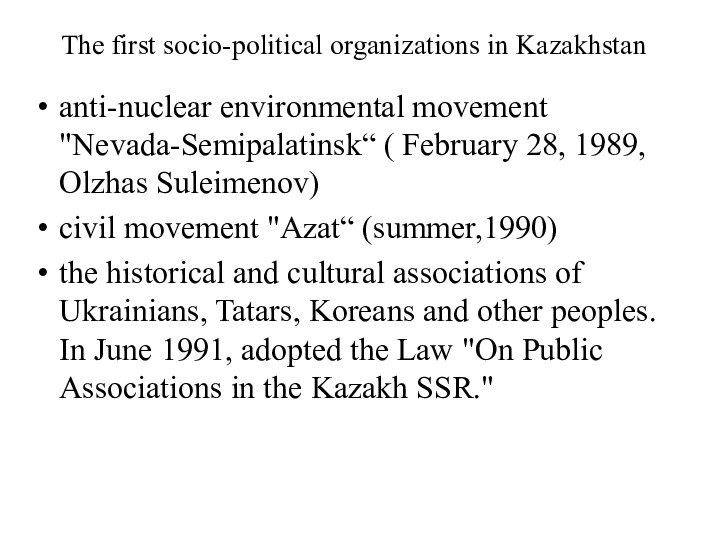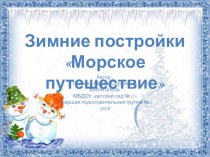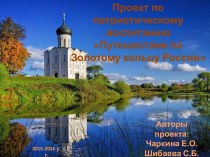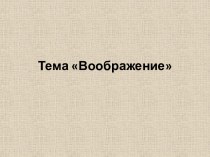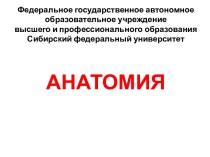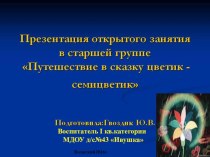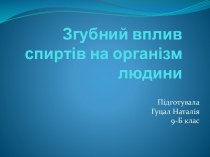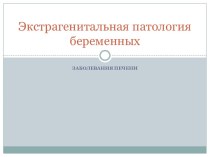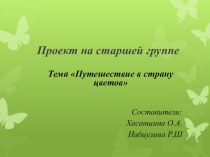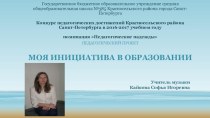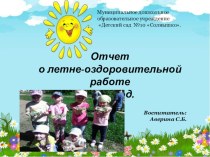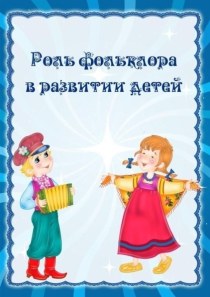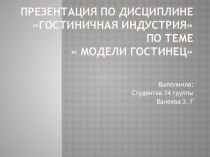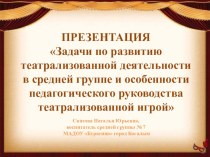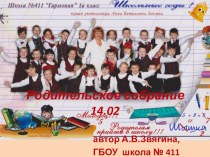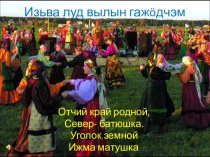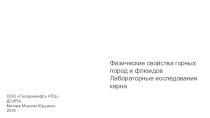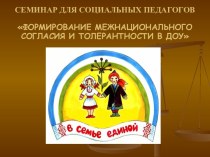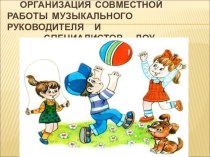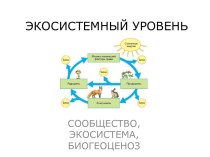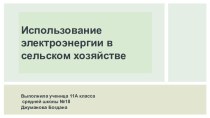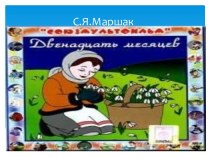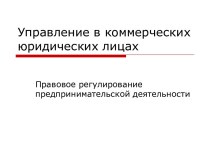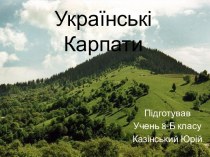Слайд 2
The policy of "perestroika" in Kazakhstan (1985-1991).
Rise of
Gorbachev
The essence of Gorbachev's reforms
Jeltoqsan 16-17, 1986:chronology of events
Estimates
of kazakh protesters
Management of G.Kolbin (December 16, 1986 to June 22, 1989)
Activities N.Nazarbayev in 1989-1991
Слайд 3
Literature
Shirin Akiner, The Formation of Kazakh Identity: From
Tribe to Nation-State (London, 1995).
С. Г Шеретов Новейшая история
Казахстана (1985-2002). Алматы.2003
Dinmukhamed Kunayev, O Moem Vremeni, Almaty, 1992
Dinmukhamed Kunayev, Ot Stalina do Gorbacheva, 1994
Almaty.1986/Dekabr. Iipart. 1991
http://www.libertykz.narod.ru/book/razdel31.html
N. Nazarbayev "Without the right and left“ . M.1991
AmrekulovN. Masanov N. Kazakhstan mezhdu proshlym I budushym. Almaty.1994
Слайд 4
Glossary
Glasnost - political openness
Uskoreniye -speed-up of economic development
Perestroika
- political and economic restructuring
Modernization- to adopt modern ways
of development in economic and political life
Tass - Telegraph Agency of the Soviet Union
Слайд 5
Rise of Gorbachev
After years of stagnation, the "new
thinking” of younger Communist apparatchiks began to emerge. After
the death of General Secretary Konstantin Chernenko, the Politburo elected Mikhail Gorbachev to the position of General Secretary of the Communist Party of the Soviet Union (CPSU) in March 1985, marking the rise of a new generation of leadership. Under Gorbachev, relatively young, reform-oriented technocrats, who had begun their careers in the heyday of "de−Stalinization" under Nikita Khrushchev (1958–1964), rapidly consolidated power within the CPSU, providing new momentum for political and economic liberalization, and the impetus for cultivating warmer relations and trade with the West.
Слайд 7
Reforms
Gorbachev's primary goal as General Secretary was to
revive the Soviet economy after the stagnant Brezhnev years.
In 1985, he announced that the Soviet economy was stalled and that reorganization was needed. Gorbachev proposed a "vague program of reform", which was adopted at the April Plenum of the Central Committee
Gorbachev initiated his new policy of perestroika and its attendant radical reforms in 1986; they were sketched, but not fully spelled out, at the 27th Party Congress in February–March 1986. The new policy of "reconstruction" was introduced in an attempt to overcome the economic stagnation by creating a dependable and effective mechanism for accelerating economic and social progress.
Слайд 8
According to Gorbachev, perestroika began the process the
dismantling of the Soviet administrative command economy through his
programs of glasnost, uskoreniye.
Additionally, the costs of superpower status—the military, space program, subsidies to client states—were out of proportion to the Soviet economy. The new wave of industrialization based upon information technology had left the Soviet Union desperate for Western technology and credits in order to counter its increasing backwardness.
Economic reforms took up much of the rest of 1987, as a new law giving enterprises more independence was passed in June and Gorbachev released a book, Perestroika: New Thinking for Our Country and the World.
Слайд 9
Glasnost
Glasnost resulted in greater freedom of speech and
the press becoming far less controlled. Thousands of political
prisoners and many dissidents were also released. Soviet social science became free to explore and publish on many subjects that had previously been off limits, including conducting public opinion polls.
State archives became more accessible, and some social statistics that had been kept secret became open for research and publication on sensitive subjects such as income disparities, crime, suicide, abortion, and infant mortality. The first center for gender studies was opened within a newly formed Institute for the Socio−Economic Study of Human Population.
In January 1987, Gorbachev called for democratization: the infusion of democratic elements such as multi−candidate elections into the Soviet political process.
Слайд 10
Congress of People's Deputies
In June 1988, at the
CPSU's 19-th Party Conference, Gorbachev launched radical reforms meant
to reduce party control of the government apparatus. On 1-st December, 1988, the Supreme Soviet amended the Soviet constitution to allow the establishment of a Congress of People's Deputies as the Soviet Union's new supreme legislative body.
Elections for the new Congress of People's Deputies were held throughout the USSR in March and April 1989.
On March 15, 1990, Gorbachev was elected as the first executive president. At the same time, Article 6 of the constitution was changed to deprive the CPSU of a monopoly on political power.
To proceed with reforms opposed by the majority of the communist party, Gorbachev aimed to consolidate power in a new position, President of the Soviet Union, which was independent from the CPSU and the soviets and whose holder could be impeached only in case of direct violation of the law.
Слайд 11
Jeltoqsan, 16-17
The Jeltoqsan (means December in the
Kazakh language).
Kazakhstan in response to General Secretary Mikhail Gorbachev's
dismissal of Dinmukhamed Konayev, the First Secretary of the Communist Party of Kazakhstan and an ethnic Kazakh, and the subsequent appointment of Gennady Kolbin, an outsider from the Ulyanovsk region began the protest. In the morning of 17 December, as an initial number of 200-300 students gathered in front of the Central Committee building on Brezhnev square to protest the decision of the CPSU to replace Kunayev with Kolbin.
Слайд 13
Next day the number of protesters increased to
1,000-5,000 as students from universities and institutes joined the
crowd on Brezhnev square. In the following days, protests spread to Shymkent, Taldykorgan and Karaganda.
TASS reported that "A group of students, incited by nationalistic elements, last evening and today took to the streets of Alma Ata expressing disapproval of the decisions of the recent plenary meeting. Hooligans and other antisocial persons made use of this situation.”
Witnesses reported that the rioters were given vodka, narcotics and leaflets, indicating that the riots were not spontaneous. However, the reports about "December" were not true because students knew what they were doing. Moreover, there was not any idea about a "nationalism" or an "independence", it was just a protest towards Gorbachev's decision about Konaev.
Слайд 14
Headlines about the events of 1986 in Almaty
in foreign news
Los Angeles times: “Riot Reported on Ouster
of Soviet Official : Tass Press Agency Gives Unprecedented Account of Violence” (18/12/1986)
The New York Times:” Soviet nationalities: Russians rule, others fume” (Ethnic russians and their slavic cousins continue to dominate the ruling communist party). (19/12/1986)
The New York Times: Origins of Kazakhstan rioting are described.
Слайд 15
Estimates of protesters
The number of estimates of protesters
were vary.
Initial reports from Moscow said that about 200
people were involved in the riots. Later reports from authorities of Kazakh SSR estimated that the riots drew 3,000 people.
Other estimates are of at least 30,000 to 40,000 protestors with 5,000 arrested and jailed, and an unknown number of casualties. Jeltoqsan leaders say over sixty thousand Kazakhs participated in the protests.
In Karaganda, fifty-four students were excluded from the universities.
Слайд 16
Loss of life
According to the Kazakh SSR government,
there were two deaths during the riots, including a
volunteer police worker and a student. Both of them had died due to blows to the head. About 100 others were detained and several others were sentenced to terms in labor camps.
Sources cited by Library of Congress (Washington) claim that at least 200 people died or were summarily executed soon after. Some accounts estimate casualties at more than 1,000.
The writer Mukhtar Shakhanov claimed that a KGB officer testified that 168 protesters were killed, but that figure remains unconfirmed as most material about Jeltoksan is in Moscow locked in Communist Party of the Soviet Union and KGB archives.
Kazakh students Qayrat Rısqulbekov and Lyazzat Asanova were among the victims.
Слайд 17
Management of G.Kolbin
(December 16, 1986 to June
22, 1989.)
Kolbin was attempting to conciliate the Kazaks population
with promises, but also conducted a purge of pro-Kunayev members of the CPK, replacing hundreds of republic-level and local officials.
Although officially "nationality-blind," Kolbin's policies seemed to be directed mostly against Kazaks.
Слайд 18
Kolbin made a strong commitment to promoting the
local language and in 1987 suggested that Kazaks become
the republic's official language. In fact, the campaign in favor of bilingualism was transformed into a campaign to improve the teaching of Russian.
Kolbin proposed government program on building houses, "Housing-91", which was not completed.
Agricultural output had fallen so low by 1989 that Kolbin proposed to fulfill meat quotas by slaughtering the millions of wild ducks that migrate through Kazakstan.
The republic's industrial sector had begun to recover slightly in 1989, but credit for this progress was given largely to Nursultan Nazarbayev, an ethnic Kazak who had become chairman of Kazakstan's Council of Ministers in 1984.
Слайд 19
Activities N.Nazarbayev in 1989-1991
N.Nazarbayev replaced Kolbin on 22
June 1989.
Nasarbaev was Chairman of the Supreme Soviet
from 22 of February, to 24 of April 1990.
Nazarbayev was elected as President of Kazakhstan by the Supreme Soviet on 24 of April. He won the presidential election on 1-st December in 1991 , winning with 91.5% of the vote.
Слайд 20
Main documents in 1989-1991
September 22, 1989 adopted the
"Law on Languages in the Kazakh Soviet Socialist Republic."
The official language of the Kazakh Republic recognized the Kazakh language, Russian - the language of interethnic communication.
The Supreme Soviet of the Kazakh SSR adopted a "Declaration of State Sovereignty of Kazakh SSR.“ on 25 of October, 1990
With the adoption of the Declaration of State Sovereignty in Kazakhstan completed the restructuring, understood as a process of reform, directed from the center and on the conditions of the center.
